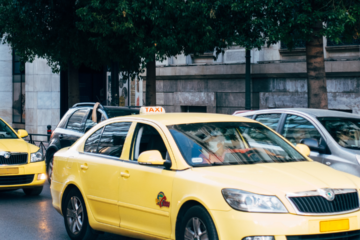Common Accidents & Injuries Involving Bicycles

Cycling is not just a mode of transportation; it’s a way of life for many. The wind in your hair, the freedom of the open road—it’s exhilarating. But with this freedom comes responsibility. Whether you’re a seasoned cyclist or just starting out, it’s crucial to understand the potential risks and how to mitigate them. In this comprehensive guide, we’ll explore the common accidents and injuries involving bicycles, empowering you to ride safer and smarter. Of course, if you are involved in an incident and it wasn’t your fault, look into bicycle accident claims and seek legal help.
Understanding the Risks
Before we delve into specific accidents and injuries, let’s first grasp the broader landscape of cycling risks. Whether you’re commuting to work or hitting the trails for a weekend adventure, cyclists face various hazards, including:
- Collisions with Motor Vehicles: One of the most significant risks for cyclists is collisions with cars, trucks, or motorcycles. These accidents often result from drivers failing to see cyclists or disregarding their right of way.
- Road Hazards: Uneven surfaces, potholes, railroad tracks, and debris pose threats to cyclists, leading to accidents and injuries.
- Dooring Incidents: Opening car doors into the path of oncoming cyclists can cause severe accidents, commonly known as “dooring incidents.”
- Weather Conditions: Rain, snow, and ice can reduce traction and visibility, increasing the likelihood of slips and falls.
- Inexperienced Cyclists: Novice cyclists may lack the skills and confidence to navigate traffic safely, making them more susceptible to accidents.
Common Accidents & Injuries
1. Vehicle-Cyclist Collisions
Causes:
- Driver Inattention: Distracted driving, such as texting or adjusting the radio, can lead to drivers failing to notice cyclists.
- Failure to Yield: Drivers may disregard cyclists’ right of way at intersections or when making turns, resulting in collisions.
- Speeding: Excessive speed reduces drivers’ reaction times and increases the severity of accidents involving cyclists.
Injuries:
- Head Trauma: Cyclists involved in collisions with vehicles are at high risk of head injuries, including concussions and traumatic brain injuries (TBIs).
- Fractures: Impact with a vehicle or the road can cause fractures to the arms, legs, ribs, or pelvis.
- Soft Tissue Injuries: Sprains, strains, and contusions are common soft tissue injuries resulting from vehicle-cyclist collisions.
2. Road Hazards
Examples:
- Potholes: Deep potholes can cause cyclists to lose control and crash.
- Railroad Tracks: Crossing railroad tracks at improper angles can lead to wheel entrapment and falls.
- Debris: Loose gravel, branches, or litter on the road pose slipping and tripping hazards for cyclists.
Injuries:
- Abrasions: Contact with rough surfaces can result in skin abrasions or “road rash.”
- Bruises: Impact with road hazards can cause bruises and contusions to various parts of the body.
- Sprains: Sudden jolts from hitting road hazards can strain ligaments and muscles, leading to sprains.
3. Dooring Incidents
Causes:
- Driver Negligence: Failing to check mirrors or blind spots before opening car doors endangers passing cyclists.
- Cyclist Speed: Cyclists traveling too close to parked cars are more vulnerable to dooring incidents.
Injuries:
- Upper Body Trauma: Dooring incidents often result in upper body injuries, including shoulder dislocations and collarbone fractures.
- Lacerations: Broken glass or sharp edges of car doors can cause cuts and lacerations to cyclists.
- Facial Injuries: Impact with a car door can lead to facial fractures or dental injuries.
Preventative Measures
Now that we’ve explored the common accidents and injuries involving bicycles, let’s discuss proactive steps to enhance safety:
- Wear Protective Gear: Always wear a properly fitted helmet and consider additional protective gear such as gloves, knee pads, and elbow pads.
- Follow Traffic Laws: Obey traffic signals, signs, and lane markings to reduce the risk of collisions with vehicles.
- Stay Visible: Use reflective clothing, lights, and reflectors to increase visibility, especially when cycling in low-light conditions.
- Maintain Your Bike: Regularly inspect and maintain your bicycle, including brakes, tyres, and lights, to ensure optimal performance and safety.
- Practice Defensive Cycling: Anticipate potential hazards, stay alert, and maintain a safe distance from vehicles and pedestrians.
- Take Cycling Courses: Consider enrolling in cycling courses or workshops to improve your skills and confidence on the road.
Q&A: Addressing Common Concerns
Q: What should I do if I’m involved in a vehicle-cyclist collision?
A: If you’re in a collision, prioritize your safety and seek medical attention if necessary. Exchange information with the driver, including insurance details, and document the scene with photos if possible. Report the incident to the authorities and consider consulting a legal professional for guidance on potential compensation.
Q: How can I avoid road hazards while cycling?
A: Stay alert and scan the road ahead for potential hazards. Maintain a safe distance from parked cars to reduce the risk of dooring incidents. When encountering road hazards, slow down, maintain a firm grip on the handlebars, and try to navigate around obstacles whenever possible.
Q: Are there any legal requirements for cyclists?
A: In the UK, cyclists must adhere to traffic laws and regulations, including obeying traffic signals, yielding to pedestrians, and using designated cycling lanes where available. It’s also mandatory for cyclists to have working lights and reflectors when cycling in low-light conditions.
Conclusion
Cycling is a rewarding and environmentally friendly mode of transportation and recreation. However, it’s essential to recognize and address the inherent risks to ensure a safe riding experience. By understanding the common accidents and injuries involving bicycles and implementing preventative measures, cyclists can enjoy the ride while minimizing the likelihood of incidents. Remember, safety always comes first on two wheels.



0 Comments